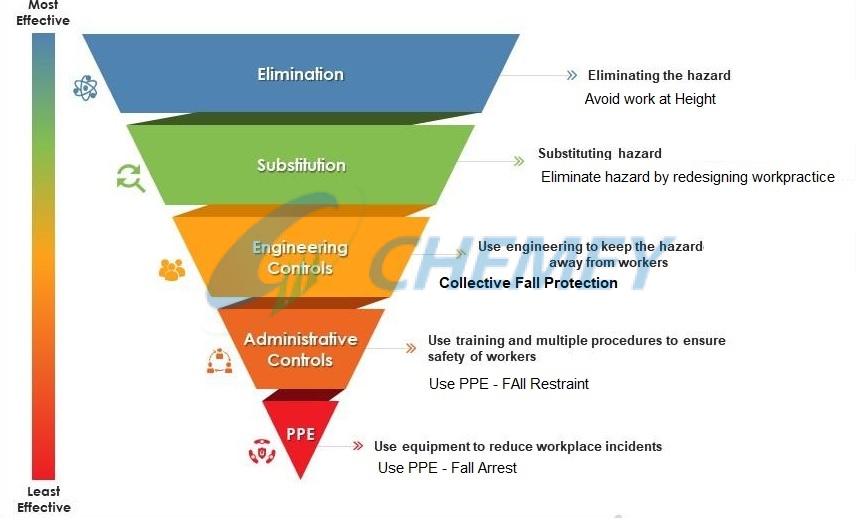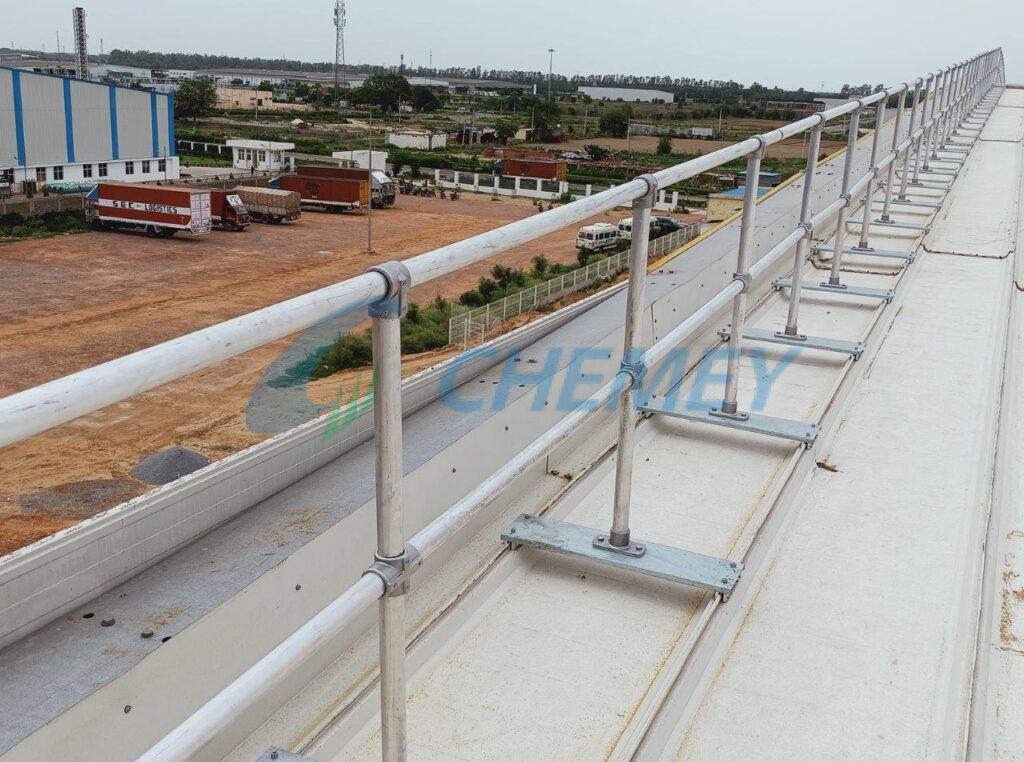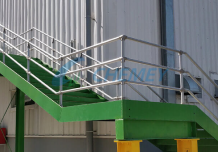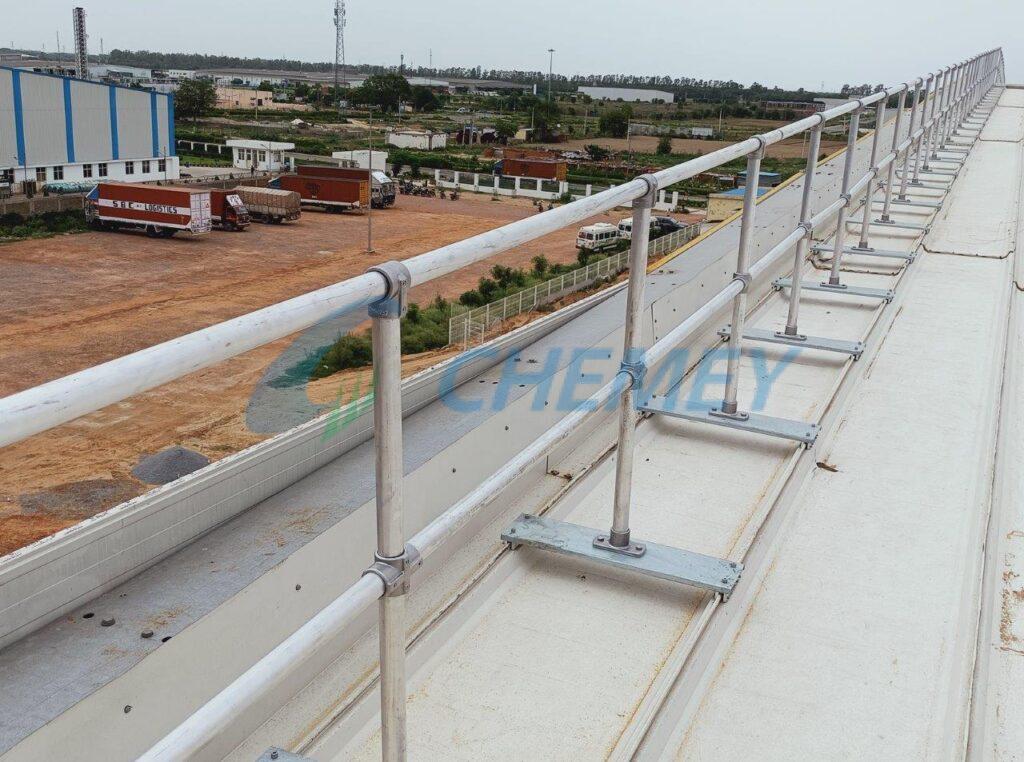Whenever our customers ask us to recommend a rooftop safety solution, we always follow hierarchy of hazard control to recommend the most appropriate form of fall protection.

- Avoid working a height or
- Eliminate hazard by redesigning work practice
- Prevent falls using collective equipment
- Restraint falls using personal protective equipment
- Arrest Fall using personal protective equipment
If the hazard cannot be eliminated by redesigning the danger or through changing working practices, then the preferred option is to use collective measures by installing guardrails to protect people working on or accessing workplace roof.
But when you start looking at the different types of guardrails and what standards they need to conform to, the decision is not as straight forward as you might assume.
What type of rooftop guardrail is best?
If you want to protect people working on your rooftop, then you will need a permanent guardrail, as access to the roof will be required several times a year.
Many permanent guardrails are fixed directly into the roof structure, and while this will provide suitable protection, these systems do have their drawbacks. For example, drilling holes into the roof to fix the system could void your roof warranty or cause costly water damage if proper care is not take at time of installation.
Properly designed and installed guardrail provides strength, stability and safety, and does not require the roof membrane to be penetrated during installation in case of standing seam roof.
Which standards should your roof guardrail comply with?

It is always preferable to have standards for most fall protection systems.However, when it came to permanent guardrails there was a lot of confusion, especially as existing standards were open to individual interpretation.
Roof edge protection was typically designed to comply with one of the following standards:
- EN 14122-3 standard, which is intended for guardrails around plant and machinery
- OSHA Standard 29 CFR 1910.29
- International Building Code Section 1607.8
- EN 13374 2004 Temporary edge protection systems
- BS 13700:2021 , which is for permanent counter weighted guardrail systems that are not fixed directly to the roof’s structure
Installing permanent rooftop guardrail is a wise choice when making your industry a better and safer place to work for your employees. If you are confused that which standard to follow and what railing is safe to install on your rooftop, that makes your employees, workers, inspectors, and managers safe, get in touch with us for Endurail Rooftop Guardrail inquiries.



